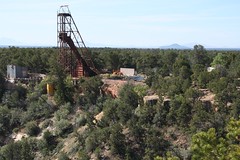There are a multitude of reasons why nuclear fission reactors make no sense as a part of our energy future (without even thinking about it too much, you've got dwindling supplies of uranium ore; the impossibility of building enough reactors fast enough to cope with climate change challenges; the difficulty finding suitable sources of cooling water for new reactors; the demonstrated problems during heat waves, such as in 2003 when France was forced to shut down reactors when cooling water temperatures became too high; the element of human error that frequently complicates safety issues, as demonstrated mightily during the ongoing Fukushima Daiichi nuclear disaster; and on and on).
Significantly, however, nuclear proponents have consistently dodged the issue that presents a glaring indictment of the entire technology: devising a long-term solution for the end of the fuel cycle, finding a way to contain and store the byproducts of 70 years of nuclear fission, much of it still residing in spent fuel pools—a storage solution that has always been deemed temporary, but with the lack of industry initiatives to move cooler fuel to dry casks and the absence of any progress toward a permanent repository, some 72,000 tons of nuclear waste exist with no plan for long-term storage.
Writing for Truth-Out.org, Gregg Levine analyzes the situation, tracing the initial enthusiasm of the nuclear industry to the present-day confusion.
As he points out in the article:
In retrospect, it's completely insane that we've proceeded with nuclear power generation and proponents continue to present the technology as the solution to global warming when the most fundamental concerns—long-term isolation of the radioactive byproducts—have never been suitably addressed.The crisis at Japan's Fukushima Daiichi facility was so dangerous, and remains dangerous to this day, in part because of the large amounts of spent fuel stored in pools next to the reactors but outside of containment - a design identical to 35 US nuclear reactors. A number of these GE Mark 1 Boiling Water Reactors - such as Oyster Creek and Vermont Yankee - have more spent fuel packed into their individual pools than all the waste in Fukushima Daiichi Units 1, 2, 3, and 4 combined.

